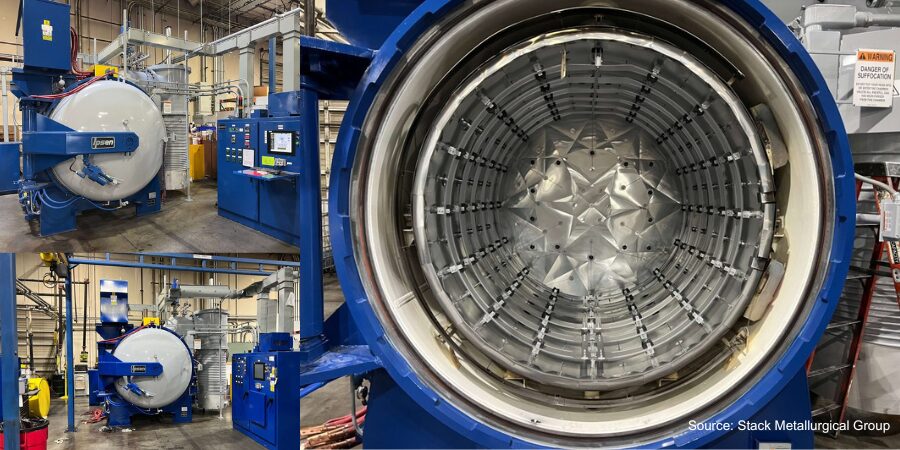![]() Do you need a better system for ensuring a successful audit? Discover how a full spectrum audit of your company’s heat treat or manufacturing processing can ensure consistency, compliance, better efficiency, and cost reductions.
Do you need a better system for ensuring a successful audit? Discover how a full spectrum audit of your company’s heat treat or manufacturing processing can ensure consistency, compliance, better efficiency, and cost reductions.
Today’s Technical Tuesday is an original content piece written by Bluestreak | Bright AM™ for Heat Treat Today’s Aerospace Edition 2021.
Many heat treaters operate on razor-thin margins. Therefore, every part of your end-to-end process must undergo a thorough inspection for streamlining and consistency. As critical data increasingly becomes an integral part of heat treat or service-based manufacturing processing, it could be time for you to audit your end-to-end pipeline to ensure the greatest efficiency and reduce costs.
Before you get started, however, you need a robust process audit checklist to ensure consistency and compliance. Here’s what you need to know.
The Benefits of a Checklist
It’s possible to operate without a checklist at all or with a generic one designed with no particular company in mind. However, can you be sure that your audits are consistent and proactive? If you operate without a checklist, you risk consistency and compliance.
Checklists provide the following:
- Consistency: Everyone evaluates the same way.
- Recordkeeping: You never question when or if an audit happened.
- Comprehensive reviews: You’ll never miss a detail again.
- Proactive feedback: Identify issues before they become catastrophic.
- Preventive maintenance: Based on feedback, you can accomplish one of the biggest success determinants in processing.
A checklist not only improves the process but also helps heat treaters make the shift to valuable proactive operations. Not many years ago, downtime due to unplanned maintenance was part and parcel of the overall process, but now it can be reduced significantly with better processing software tools, effective data capture, and statistical process control (to look for negative processing trends before they become a part-processing problem).
Building a Robust Checklist
When you shift to a checklist-based audit, it can be tempting to copy and use something generic. But that’s just too risky. Instead, think through a customized checklist that gathers the data you need and ensures a comprehensive yet efficient internal audit every single time, no matter who conducts it.
- Set your schedule. Checklists only work with regular upkeep. Make sure everyone is on the same page about audit schedules.
- Create your accountability line. Who reports to whom? What happens to records? Who is responsible for initiating and following up? These details matter for follow-ups and accountability.
- Customize your checklist for your process. Your unique production processes aren’t exactly like anyone else’s. You can view other examples for reference, but your checklist must follow your own processes and each of the operating steps that make up each process.
- Edit for length and clarity. You want a comprehensive audit, but you don’t want to exhaust your auditors. Make it easier for them to maintain audit schedules by streamlining and cutting unnecessary repetition.
- Ensure that there’s room for auditor judgment. The checklist isn’t the end-all, be-all. It’s designed to guide your auditors, not erase their expertise. Make sure there’s room for this expert assessment to complement the data analytics.
The “right” checklist is highly intuitive to your production facility processes. Even one from a company in the same industry may miss crucial details from your competitive standpoint/differentiation. With a customized checklist, you assess your various processes as they stand and ensure that you’ve considered your production facility part-processing steps as the unique operation that it is.
The Process: Set benchmarks for post-audit strategies with time deadlines
Without a deadline, nothing gets done. All your benchmarks and follow-ups should have actionable deadlines. These include having proactive and preventive measures, reducing unplanned downtime, and ensuring compliance with the latest regulatory standards or part-processing specifications.
You’ll also need a plan if a timetable isn’t met. This should be part of the checklist record, so everyone involved (no matter what level) is on the same page.
Noncompliance: Ensure complete documentation and follow-through
When you have an issue of noncompliance or another failing, it’s essential to document these fully. Follow up and use that information for future improvements. This data becomes your information trail and your path forward towards continuous improvement.
It can be tempting to gloss over the recordkeeping of past failures once everything has been brought back into compliance. However, you rob your organization of the chance to streamline its process(es) and provide a roadmap for improvement in the future.
Transforming Your Heat Treating Process
A process audit checklist tailored to your specific needs is the only way to ensure that you get the data and the results you seek. You have probably gotten by in the past without it, but in a world of data-driven decision making and razor-thin margins, can you afford to now?
Think of your checklist as your process auditor’s toolbox. The checklist enhances, reminds, and ensures consistency while allowing their expertise to shine through. Once you have a customized heat treat production process audit checklist, you can reduce your risk and widen those narrow margins of success. Your business depends on it.
About the Author: Bluestreak | Bright AM™ is a Manufacturing Execution (MES) and Quality Management System (QMS) software solution to manage and control production processes and operations from front office to shipping and delivery. Ensure compliance with NIST, ISO, AIAG, API, AMS, Nadcap, SAE, TS, etc., plus any internal and Prime’s specifications. They also provide additive manufacturing solutions with Bright AM™ software.






